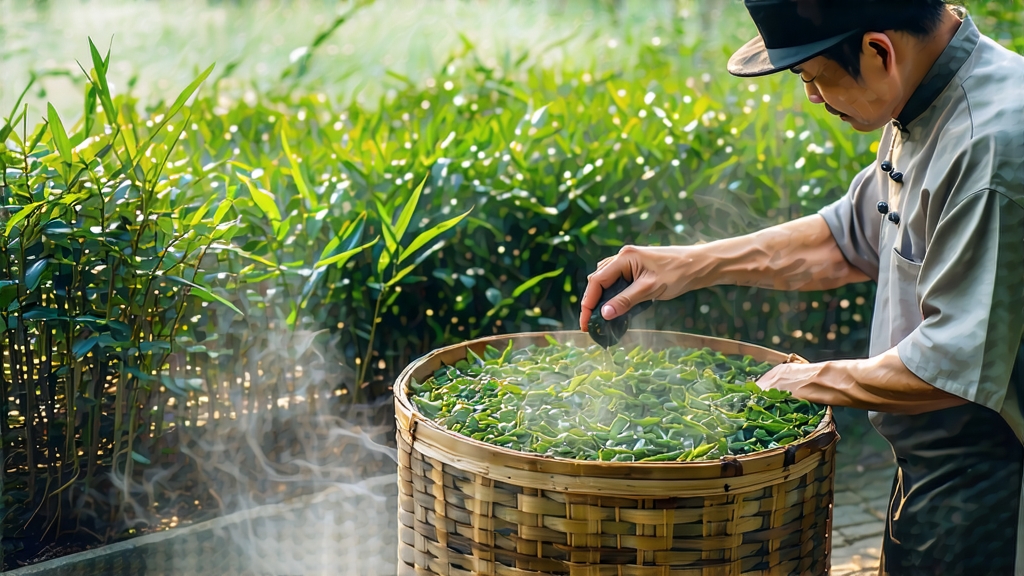
Longjing, literally “Dragon-Well,” is more than a tea; it is a liquid postcard from the hills that cradle Hangzhou’s West Lake, a sip that has greeted Chinese emperors, poets, and now, curious tea lovers on every continent. To understand why a single variety of green tea can command prices higher than silver and inspire annual pilgrimages, one must travel back nearly twelve centuries, walk among the spring mists of Shífēng, and listen for the soft rustle of leaves that sound like tiny dragons waking.
Historical roots and imperial favor
The first credible record appears in the Tang dynasty (618-907) “Classic of Tea,” but Longjing’s fame crystallized during the Ming when the nearby imperial capital turned West Lake into a retreat for scholars and emperors. Qianlong, the Qing emperor who loved to travel incognito, is said to have pocketed freshly plucked leaves from the Lion Peak (Shífēng) bushes and later decreed that the eighteen trees he visited be designated “imperial tea.” From that moment, Longjing was no longer merely local; it became a symbol of refined Jiangnan culture, a green jewel presented to foreign embassies and immortalized in scroll paintings.
Micro-terroirs: six villages, one name
Today the name “Longjing” is legally protected; only leaves harvested within the 168 km² core zone of Hangzhou may bear the title. Within this zone, six micro-terroirs define the aristocracy of flavor. Shífēng (Lion Peak) produces the most sought-after leaves: small, jade-green spears with a pronounced “sweet bean” or chestnut note. Méijiāwǔ offers a more orchid-like fragrance, while Wēngjiāshān yields a slightly mineral finish reminiscent of the limestone soil. Hǔpáo (Tiger-Running Spring) sits lower in elevation, giving grassier infusions; Yúnqǐ and Lóngwǔ bridge the gap with balanced umami. Leaves grown outside this sacred perimeter are politely called “Zhejiang Longjing,” still delicious but lacking the elusive, mist-carved elegance.
Botanical fingerprint
The cultivar most faithful to historical flavor is Quntízhǒng, the seed-propagated “original population” whose roots predate modern clonal selections. Its leaves are smaller, serrated more delicately, and contain a higher ratio of theanine to catechins, explaining the creamy sweetness that blankets the palate. In recent decades, horticulturists have introduced Wuniuzao (earlier budding) and Longjing #43, a high-yield clone that germinates ten days sooner, extending the harvest window. Purists debate whether these newcomers dilute the heritage, yet skilled makers can coax even clonal leaves into singing the old song.
The 72-hour choreography of spring picking
Longjing year begins when air temperature lingers steadily between 10 °C and 15 °C, usually the week before Qingming (Tomb-Sweeping Day, 4 April). Only the “one bud, one leaf” or “one bud, two leaves” standard is accepted, plucked within 3 cm length. Experienced pickers finish each tender shoot with a soft twist that leaves the stem’s skin intact, preventing premature oxidation. A master can harvest barely one kilogram of fresh leaves in a morning; that kilogram will shrink to 200 g after firing, enough for perhaps forty cups. Rain-soaked buds are rejected because excess moisture dulls the fragrance, while scorching afternoons are avoided to preserve amino acids. Thus, the entire economic value of a year’s crop is compressed into roughly 216 perfect hours.
Pan-firing: hand, wrist, and 300 years of muscle memory
Within minutes of picking, leaves are spread 3 cm thick on bamboo trays to lose surface water. They then enter the wok: a shallow, polished iron vessel pre-heated to 80 °C for the first “killing-green” (shāqīng) stage. The maker’s bare hand becomes the thermometer, hovering a millimeter above the metal to judge when to dump in 250 g of leaves. For ten minutes, palms trace the Chinese character for “eight” (八) while fingers flick, press, and roll the biomass. Temperature drops incrementally to 60 °C, then 40 °C, as moisture retreats and amino acids caramelize into the signature chestnut note